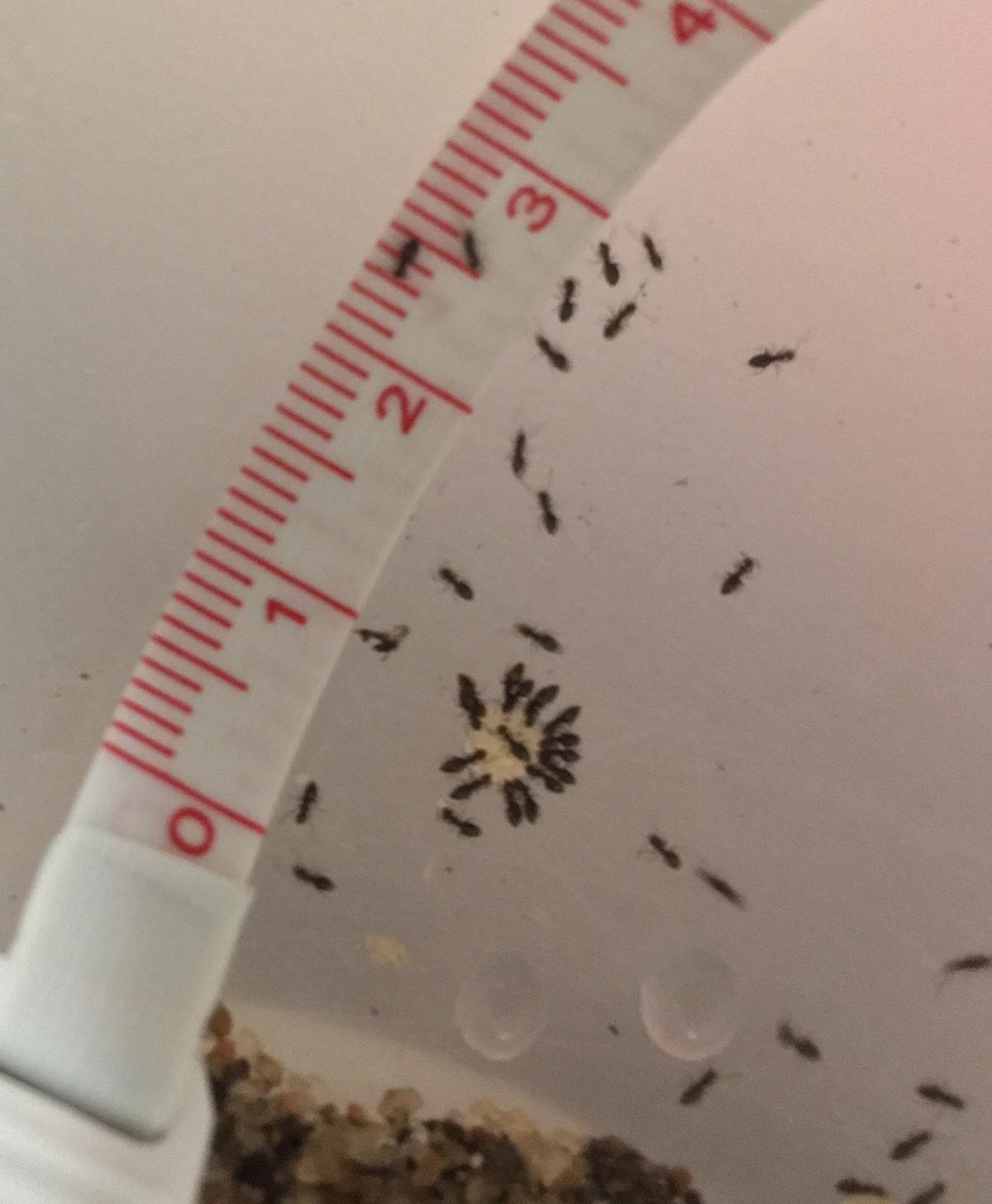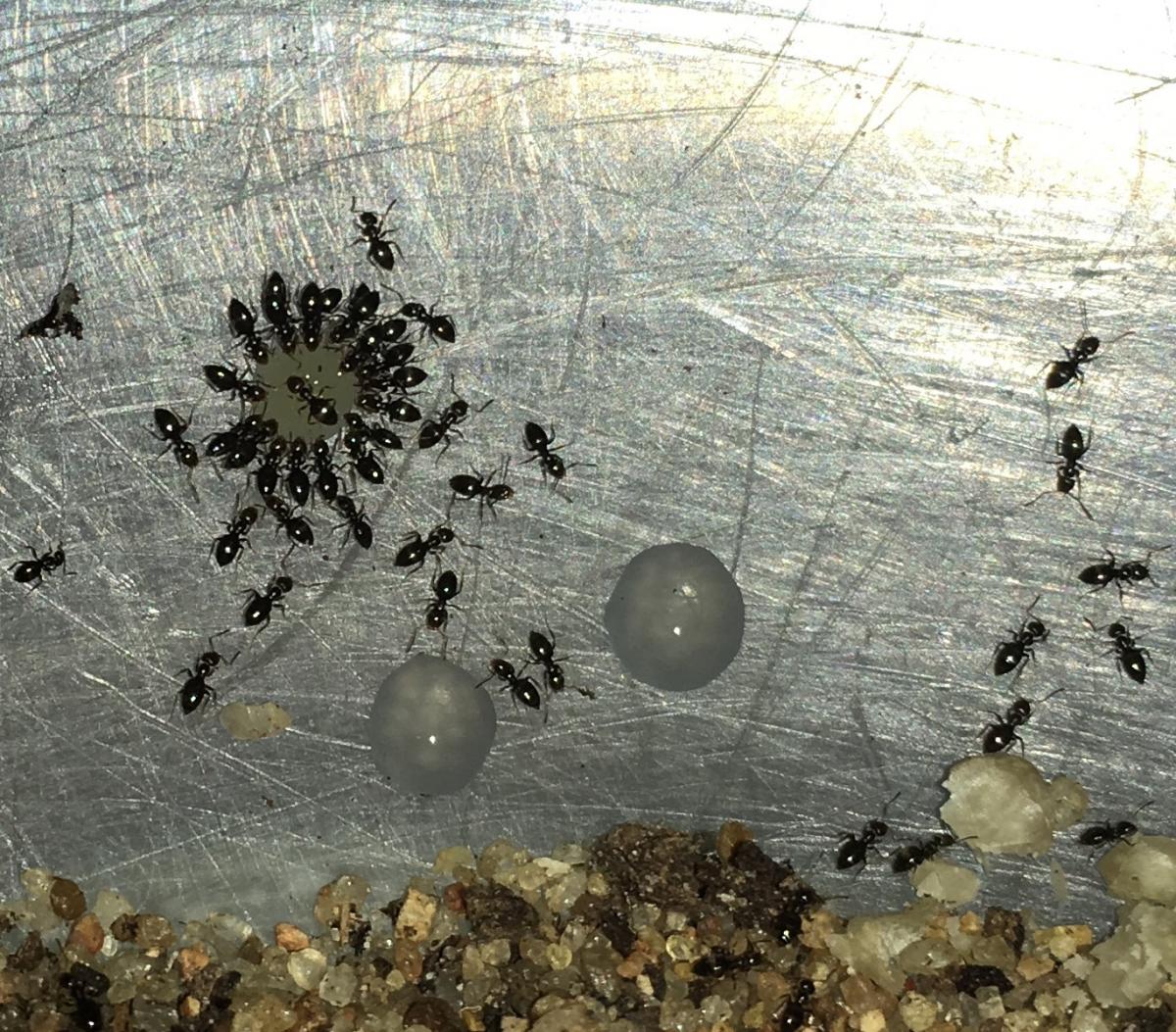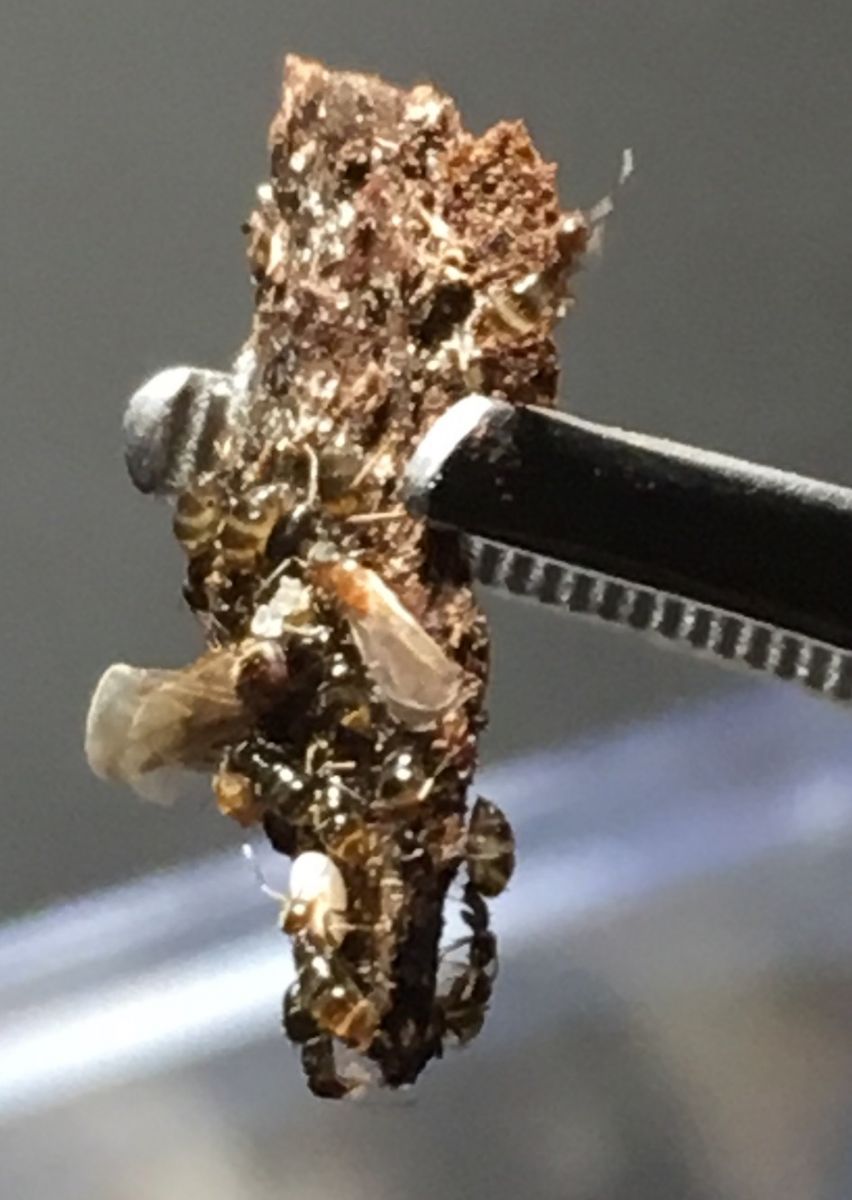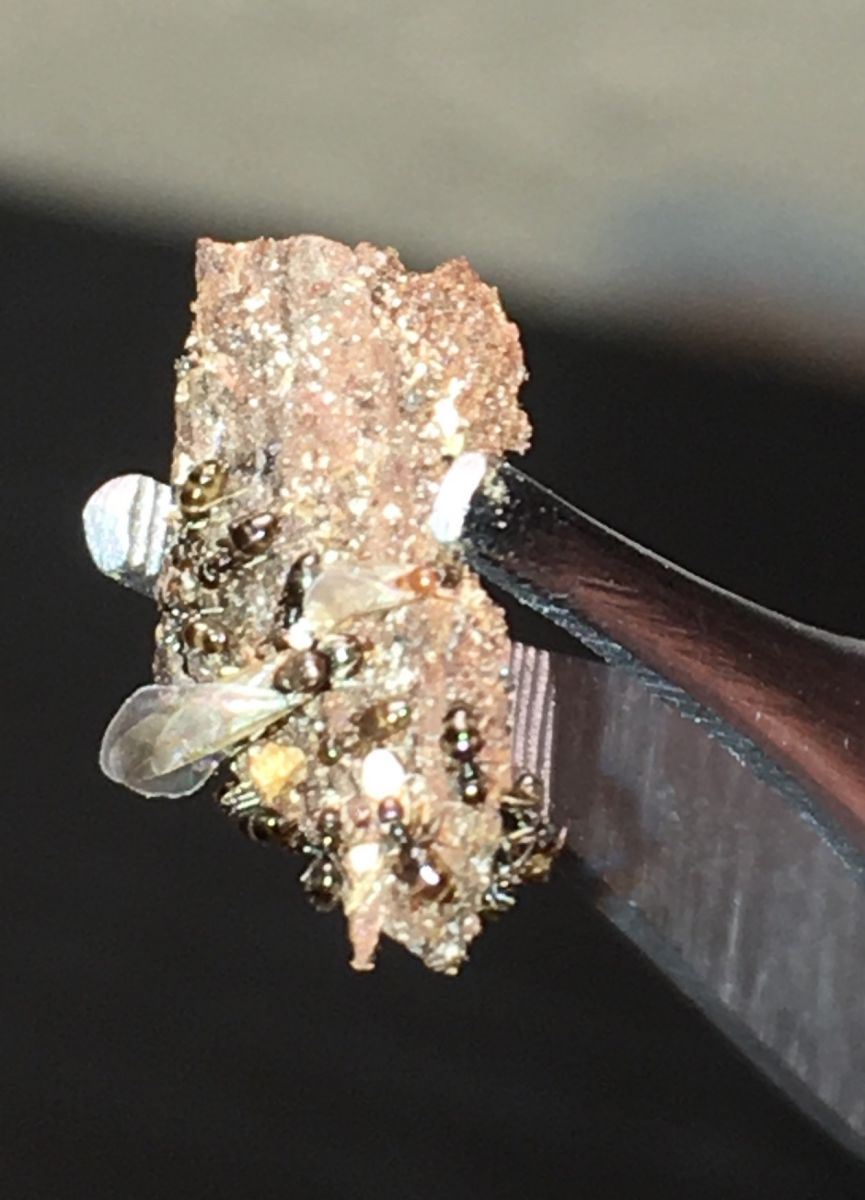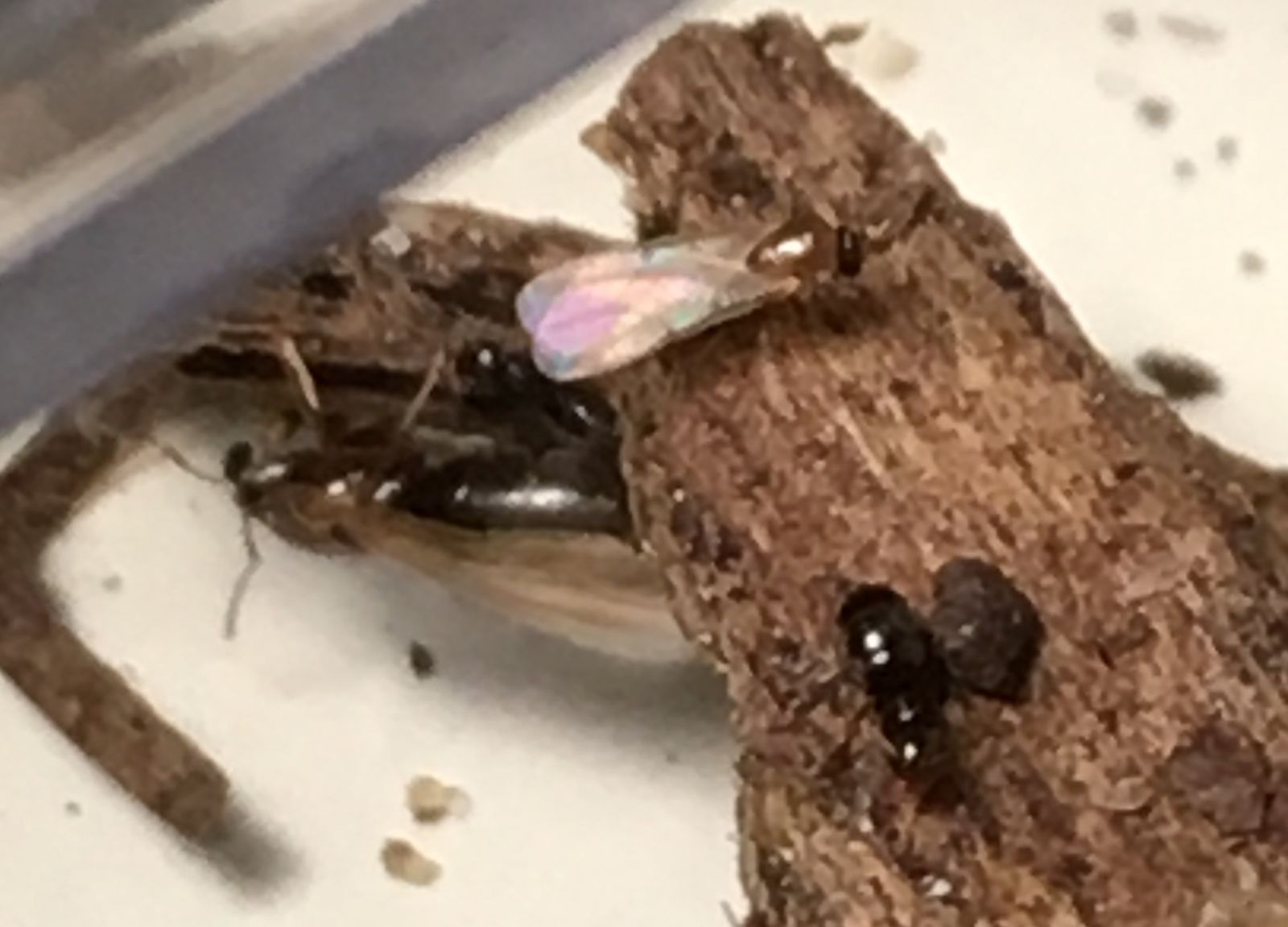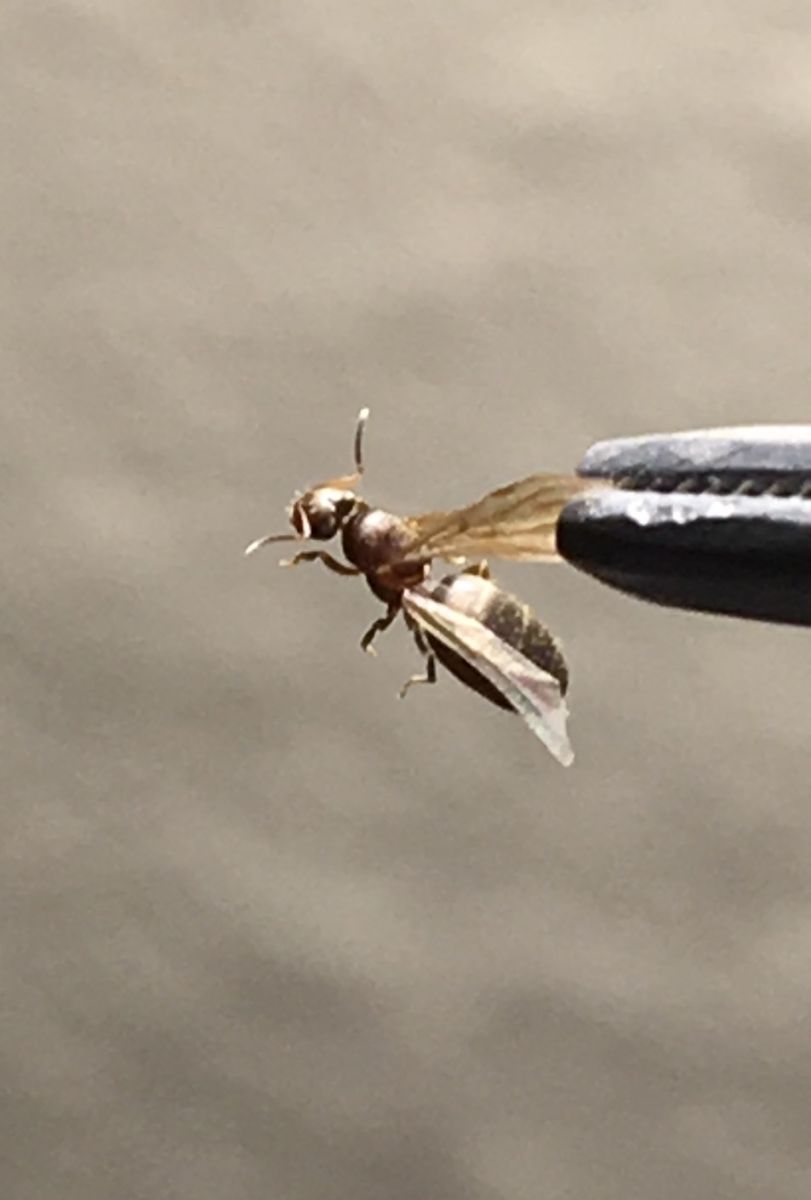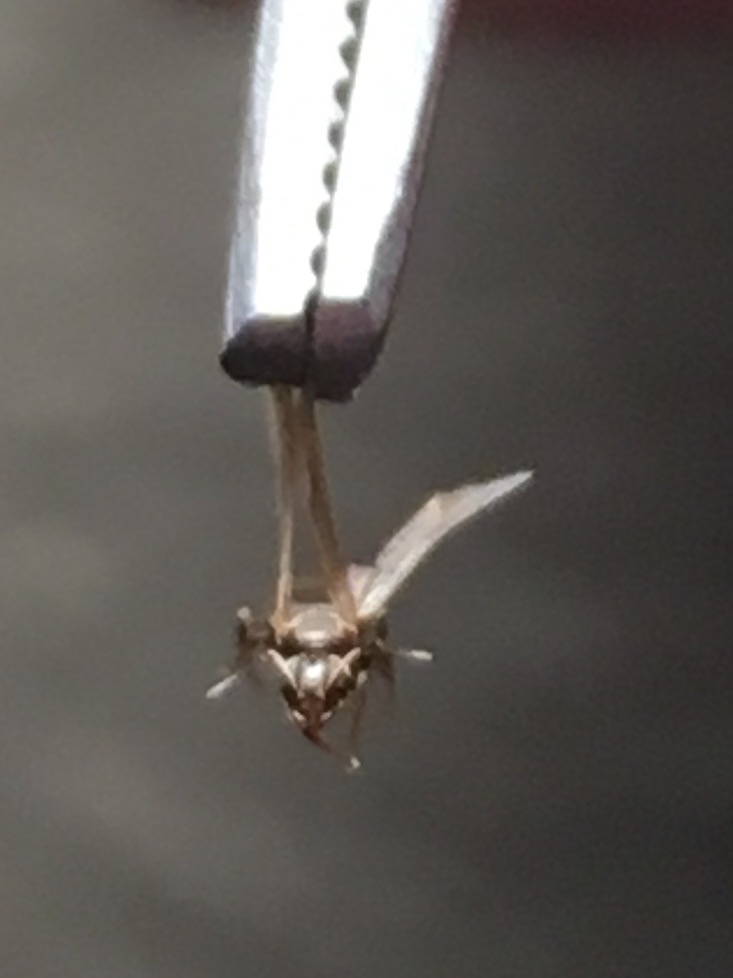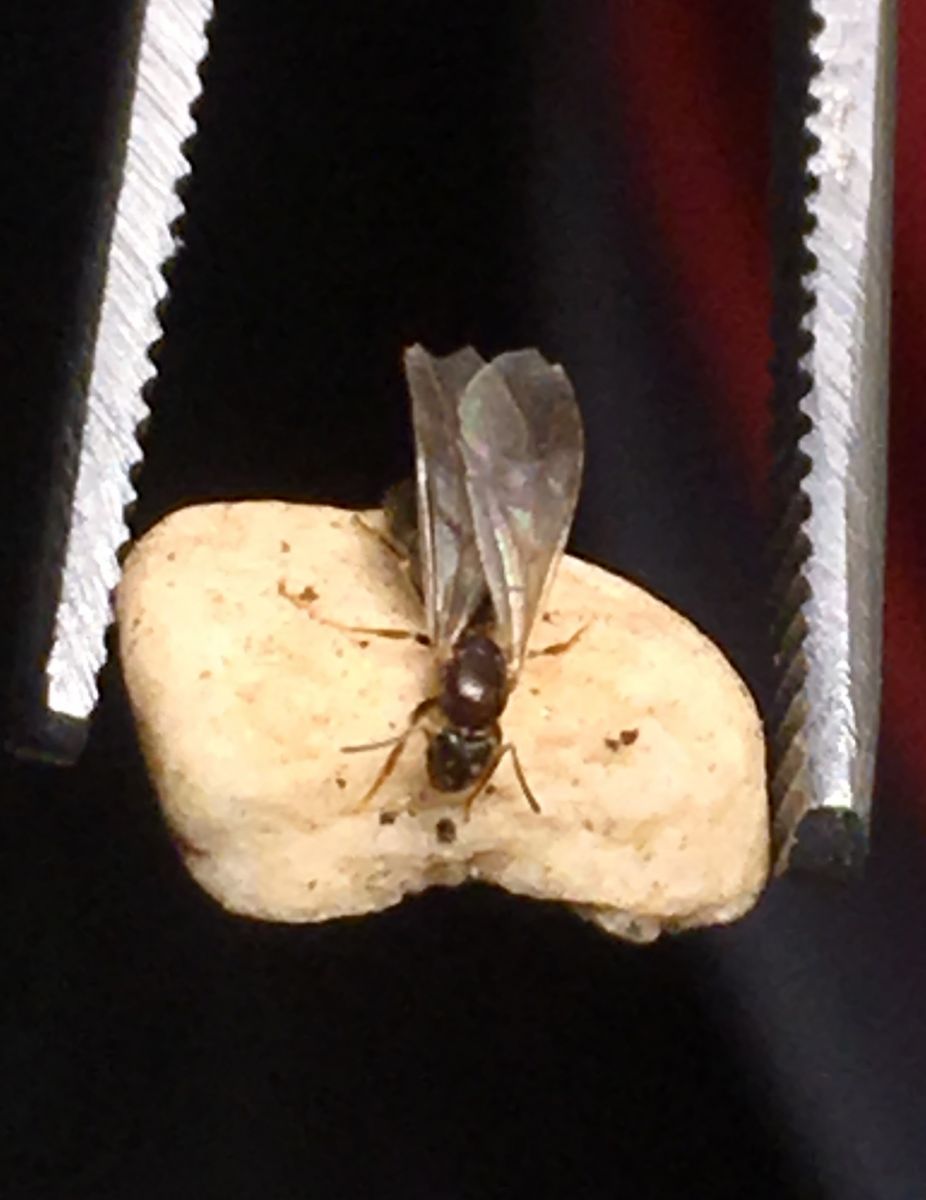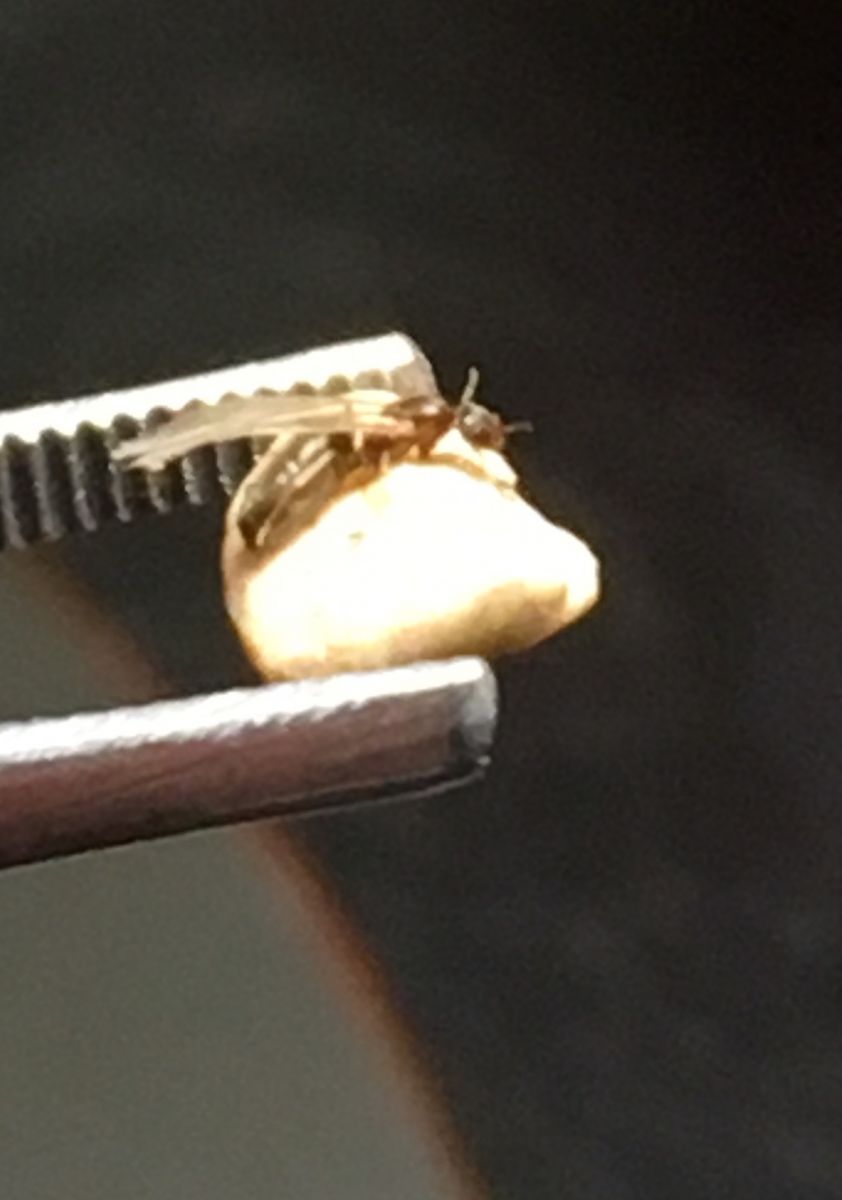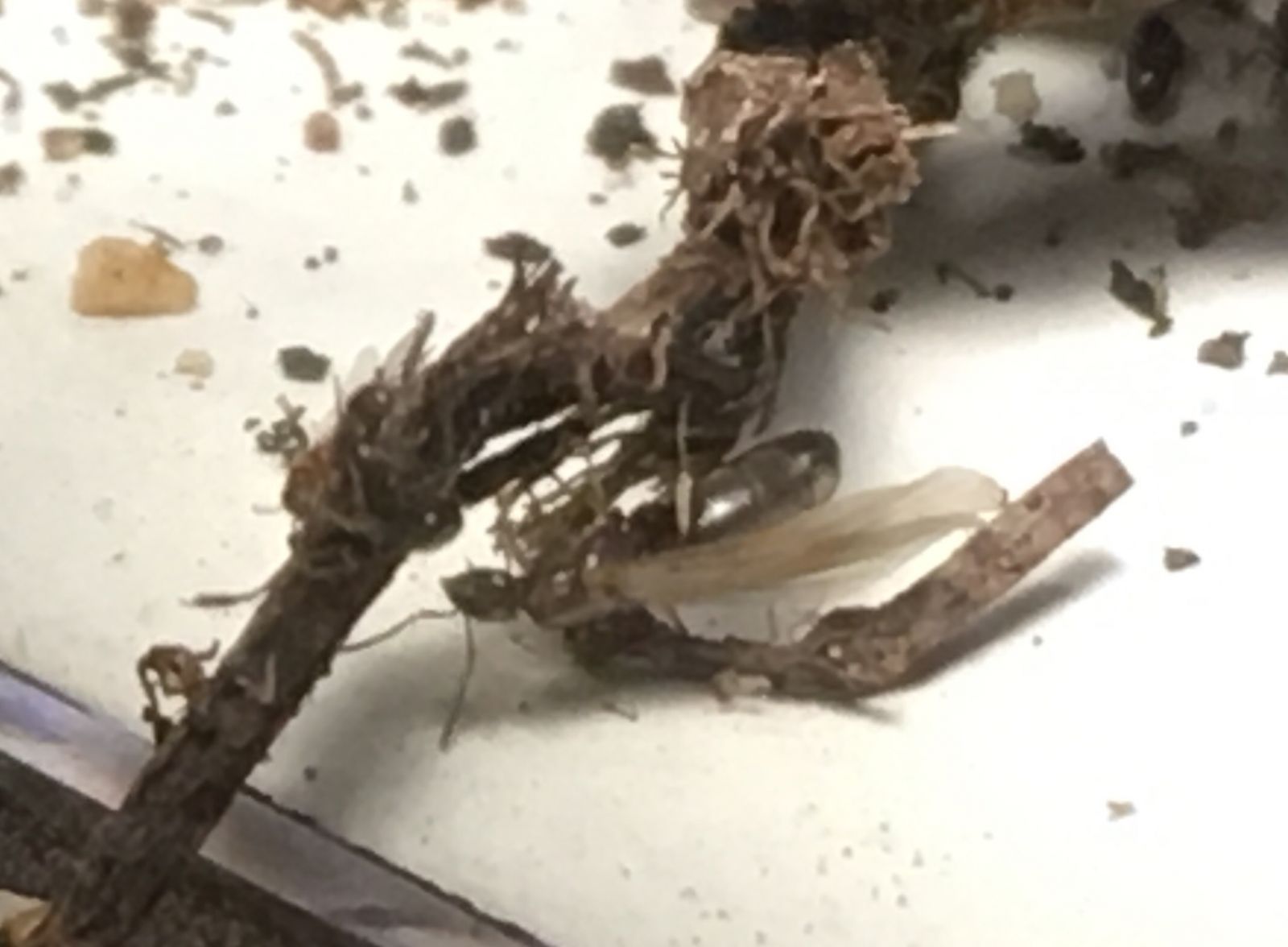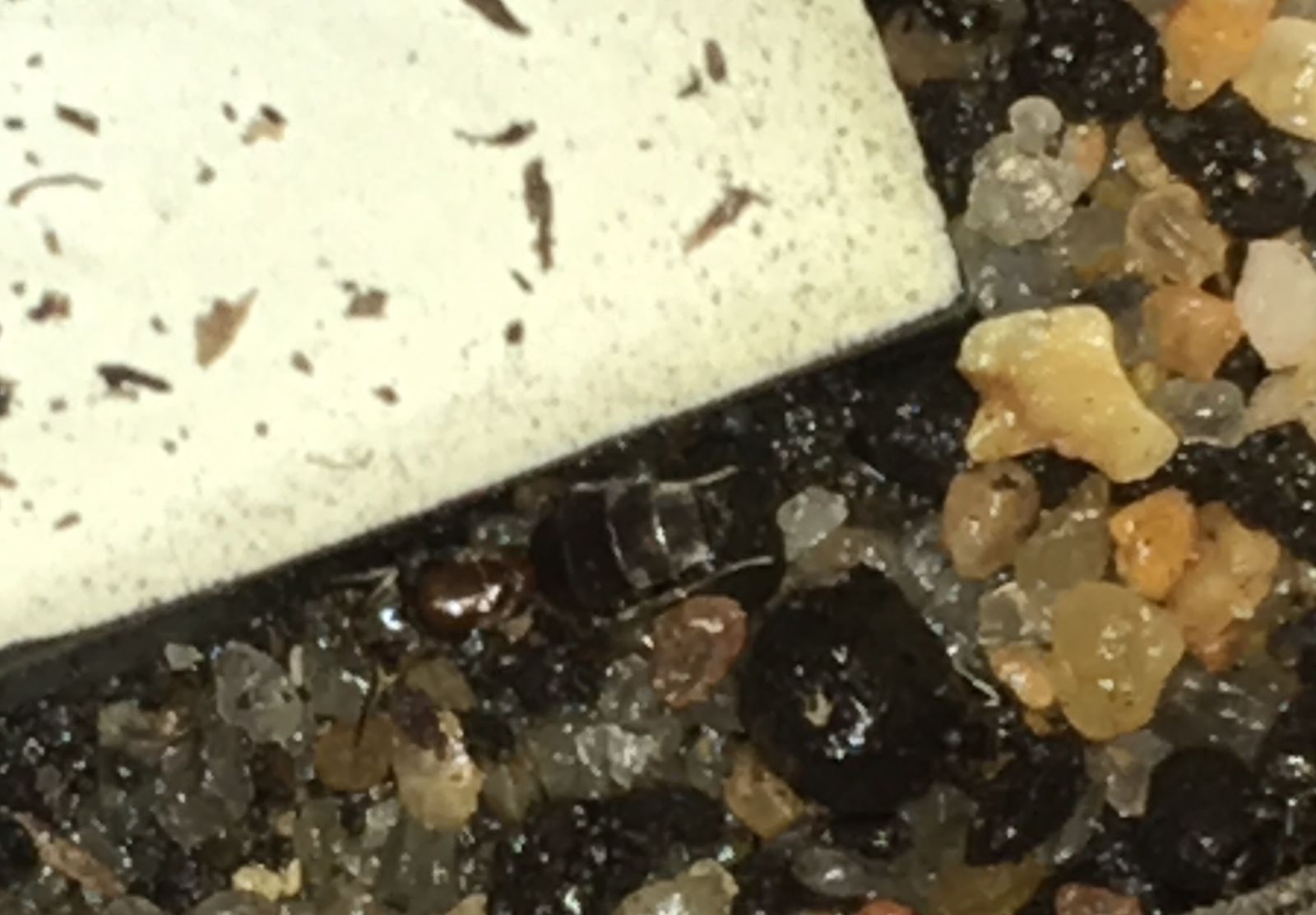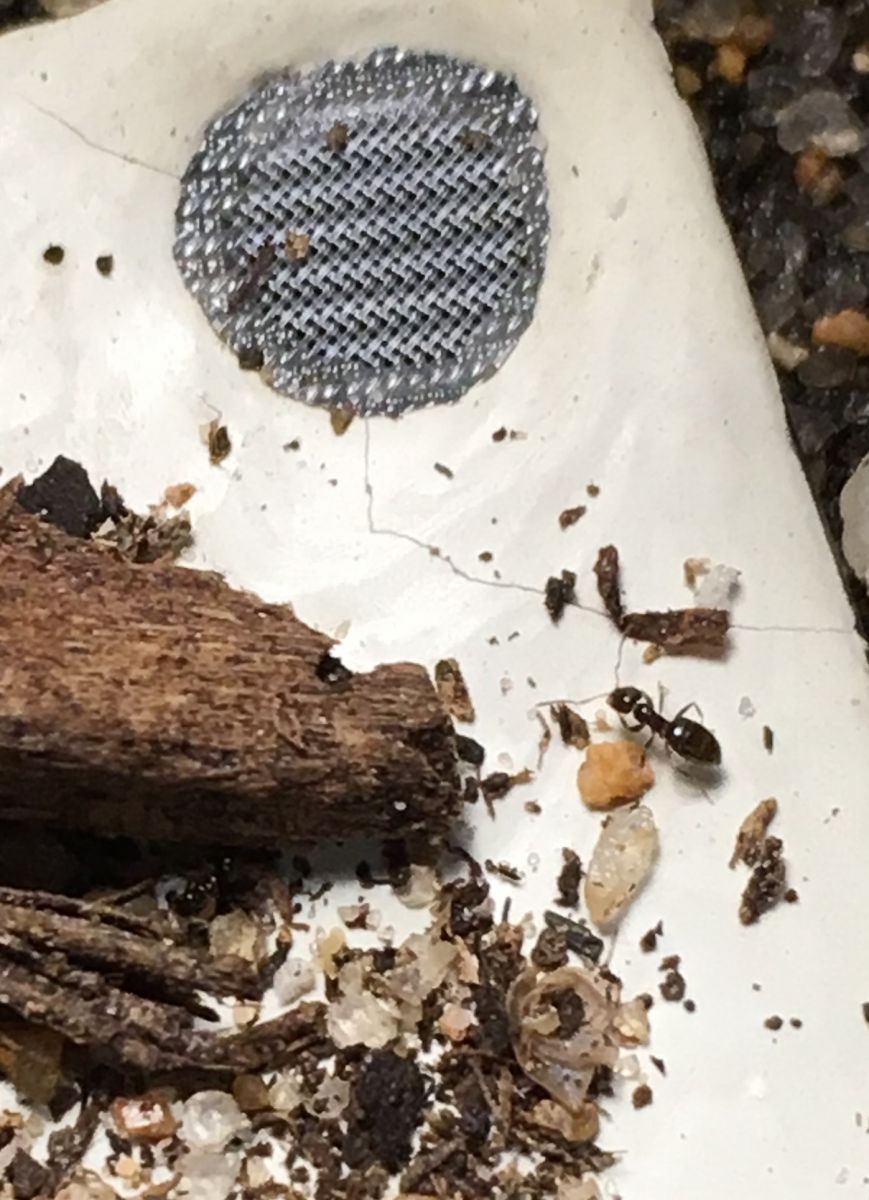1. Location of collection: On my 2nd floor balcony in north Austin.
2. Date of collection: 5/21/16
3. Habitat of collection: In one of my clay plant pots which currently houses a cactus and a succulent. I've noticed this colony, from time to time, when watering my plants or moving pots and yesterday I decided to take a look. The colony had tunnels throughout the growth medium but I believe I found the queen in the sandy bottom layers (sorry, no photos of the supposed queen - she hid very quickly). If it was the queen, she looked very similar to the one in the recent post titled "is this a Forelius pruinosus quuen??" -maybe a bit more round and about 4-5 mm. EDIT: more like 3-4 mm
4. Length (from head to gaster): workers are about 2 mm.
5. Color, hue, pattern and texture: Sorry, they're so tiny it's hard to give specifics. I don't have a magnifying lens and the photos are as good as my naked eye. They are dark brown or black and the queen was more of a reddish, light brown.
6. Distinguishing characteristics: Super small?? There are alates in the colony (also hid before photos) and what I'm guessing are the male alates were half the size of the females and more of a yellow hue.
7. Anything else distinctive: Not really. Noticed they didn't touch the sunflower seed bits I placed near their hill but surrounded the crystallized honey.
8. Nest description: See above.
Edited by Bryansant, July 7 2016 - 6:16 PM.






